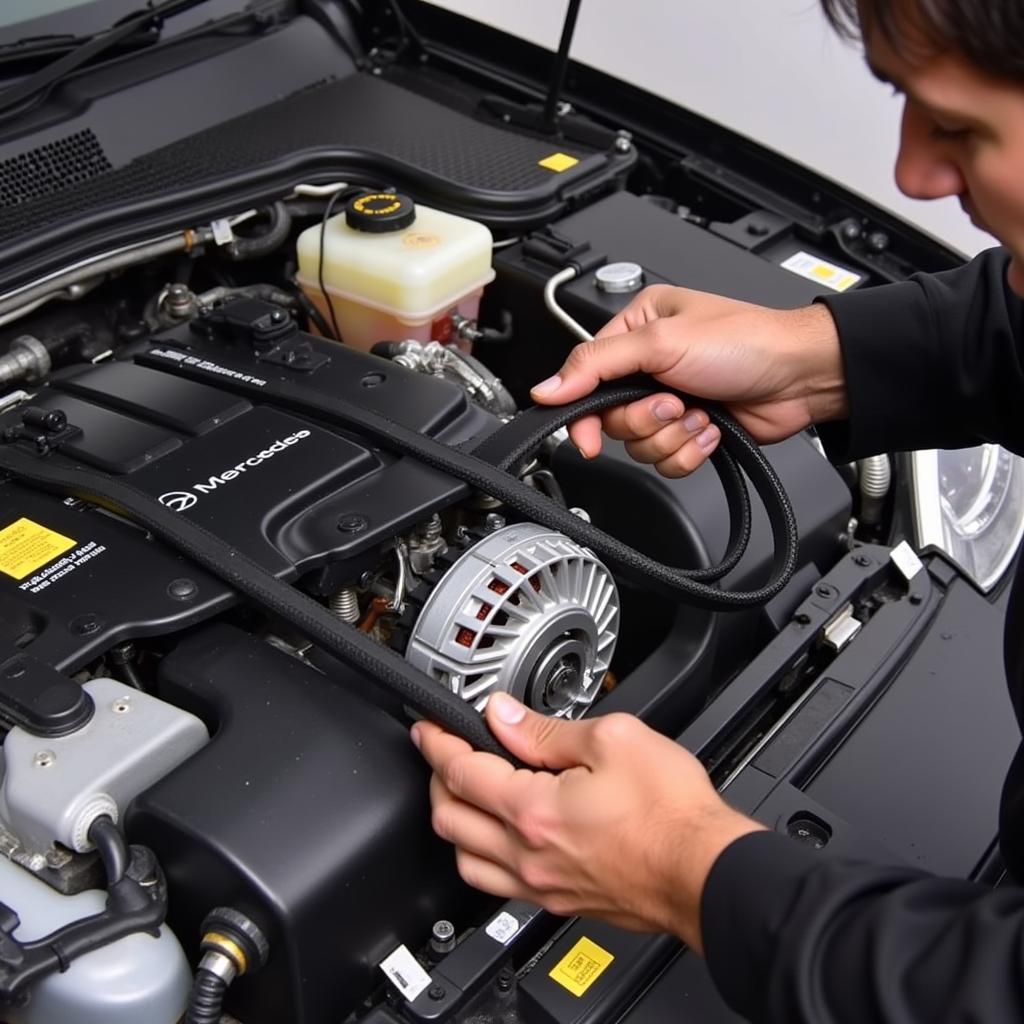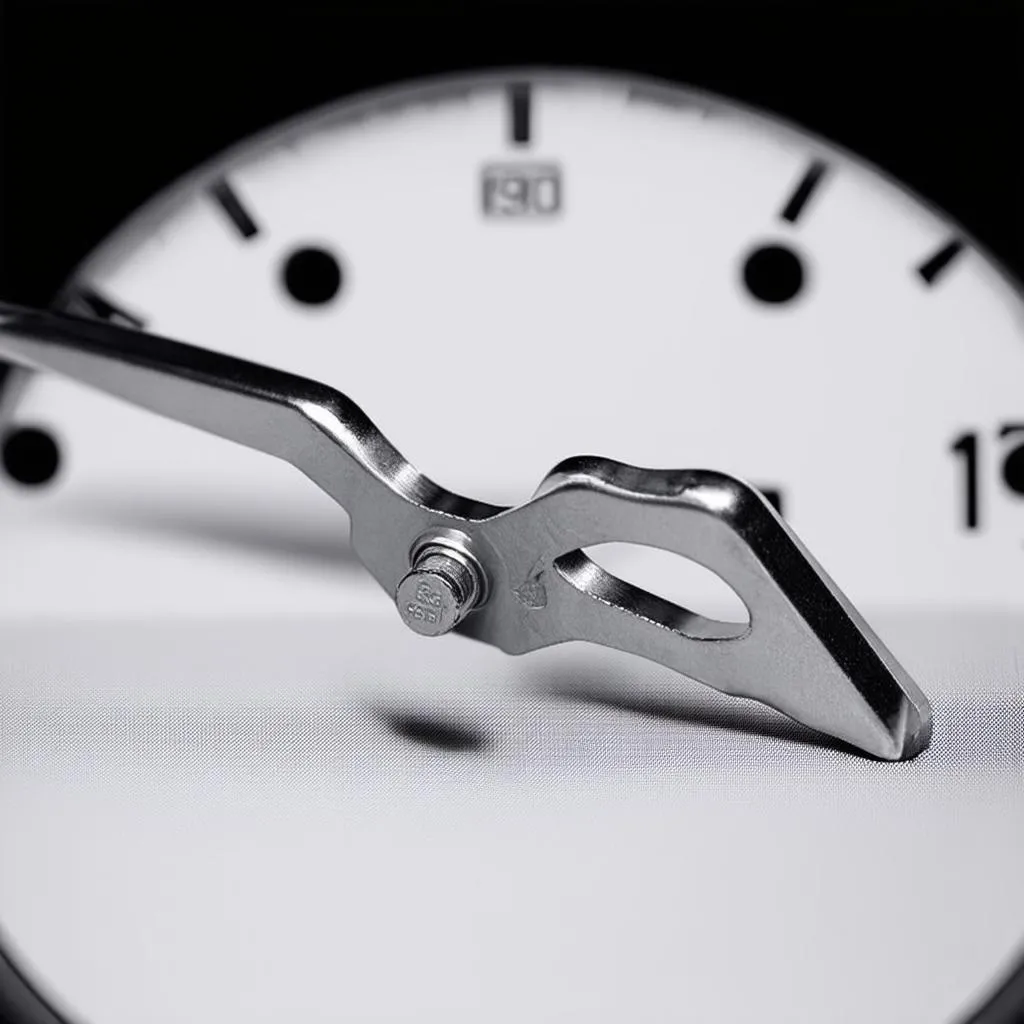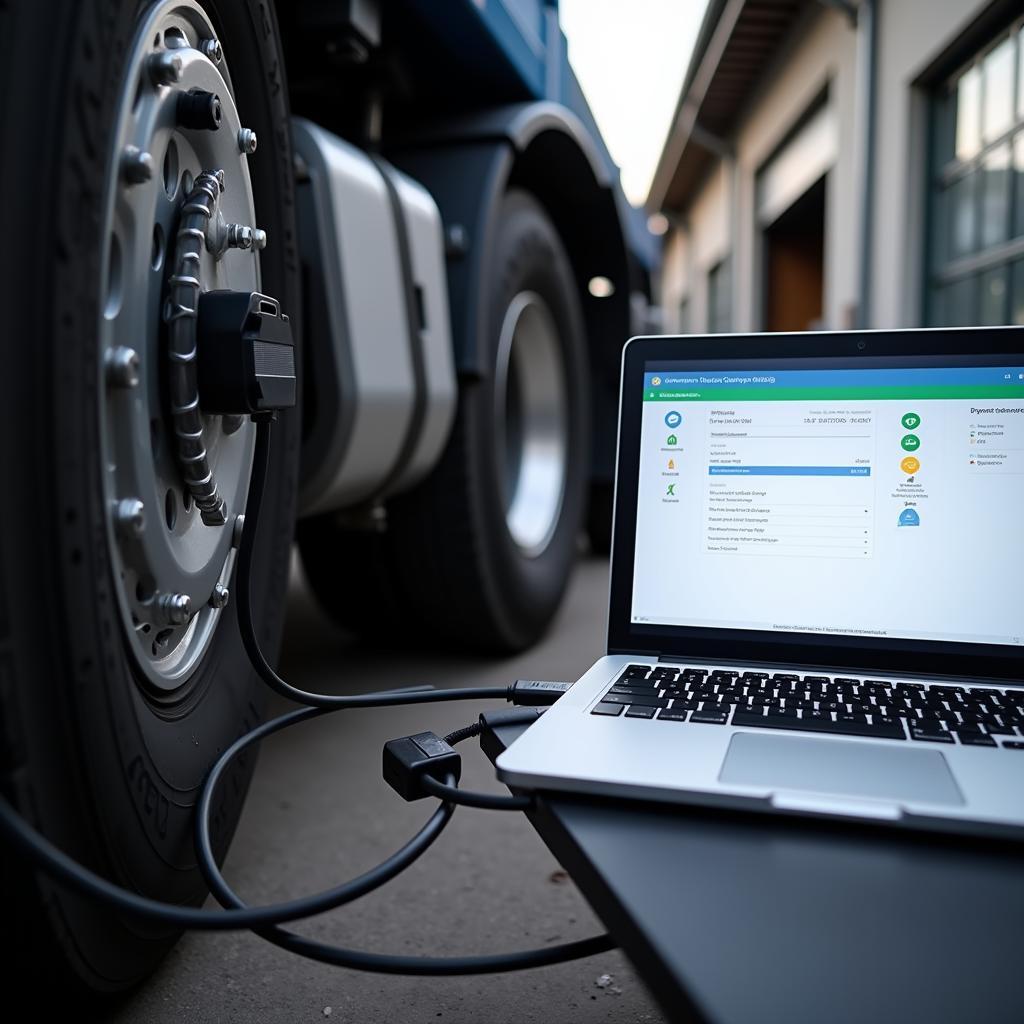A failing alternator belt can leave you stranded. Knowing how to fix a Mercedes alternator belt is crucial for any owner. This guide covers everything from diagnosing the problem to replacing the belt, empowering you to handle this common issue.
Diagnosing a failing alternator belt often involves recognizing symptoms like dimming headlights, a dead battery, or a whining noise from the engine compartment. Once you’ve identified a potential alternator belt issue, it’s important to inspect the belt itself. Look for cracks, fraying, or glazing, which are clear indicators of wear and tear. A loose belt can also cause problems, so check the tension. If the belt deflects too much when pressed, it needs tightening or replacement. Right after diagnosing the problem, you should consider getting the right tools and following the proper safety precautions. Having the correct tools for the job is essential for a smooth repair process. You can find more resources on mercedes alternator tools.
Recognizing the Signs of a Failing Alternator Belt
One of the first signs of a failing alternator belt is often dimming headlights. As the belt wears, it loses its grip, reducing the alternator’s ability to charge the battery. This decreased charging capacity can manifest as lights that dim, especially when other electrical systems, like the radio or air conditioning, are in use. Another common symptom is a dead battery. Since the alternator is responsible for keeping the battery charged, a failing belt can lead to a completely discharged battery, leaving you unable to start your car. Finally, a whining noise emanating from the engine compartment can also signal a worn alternator belt. This noise is caused by the belt slipping on the pulleys, and it often becomes more pronounced as the belt’s condition deteriorates.
Replacing Your Mercedes Alternator Belt: A Step-by-Step Guide
- Gather Your Tools: Before you begin, make sure you have the necessary tools, including a new alternator belt, the appropriate wrenches and sockets, and a belt tensioner tool.
- Locate the Alternator Belt: The alternator belt is typically located at the front of the engine and is easily identifiable as a ribbed belt running between various pulleys.
- Relieve the Tension: Use the belt tensioner tool to release the tension on the belt. This usually involves rotating the tensioner pulley or pushing it against a spring mechanism.
- Remove the Old Belt: Once the tension is released, carefully remove the old belt from the pulleys. Take note of the belt’s routing path for proper installation of the new belt.
- Install the New Belt: Route the new belt following the same path as the old belt. Double-check to ensure it’s properly seated on all pulleys.
- Restore Tension: Using the tensioner tool, apply the correct tension to the new belt. Consult your Mercedes owner’s manual for the specific tension specifications.
- Start the Engine: Start the engine and check for any unusual noises or belt slippage.
Mercedes vehicles can be complex, and it’s not always easy to fix them yourself. For more information on Mercedes repairs, you might find this helpful: is it hard to fix mercedes.
Preventing Future Alternator Belt Problems
Regular maintenance is key to preventing future alternator belt issues. Inspect the belt regularly for signs of wear and tear, and replace it at the recommended intervals outlined in your Mercedes owner’s manual. Maintaining proper belt tension is also crucial. A loose belt can slip and wear prematurely, while an overly tight belt can put excessive strain on the alternator and other engine components. Addressing any underlying issues, such as misaligned pulleys or faulty tensioners, can also help prevent premature belt failure. Sometimes, a seemingly unrelated issue can point towards a larger problem. If you’re experiencing electrical problems, it might be worth checking out this resource: mercedes gla 250 no power fix.
 Inspecting the Mercedes Alternator Belt
Inspecting the Mercedes Alternator Belt
“Regularly inspecting your alternator belt is a small investment that can save you from a major headache down the road,” says Hans Gruber, a seasoned Mercedes technician with over 20 years of experience. “A simple visual check can often identify potential problems before they escalate into costly repairs.”
In conclusion, understanding how to fix a Mercedes alternator belt can save you time and money. By recognizing the signs of a failing belt and following the steps outlined above, you can tackle this common repair with confidence. Remember regular maintenance is key to preventing future problems. For those experiencing dashboard light issues, this article might be helpful: how to fix dash light on a 2000 mercedes ml430. If you hear a ticking noise coming from your car, check this resource: fix ticking noise in my 2009 c class mercedes.
FAQ
- How often should I replace my Mercedes alternator belt? Consult your owner’s manual for specific recommendations.
- What are the signs of a failing alternator belt? Dimming headlights, a dead battery, and a whining noise from the engine are common indicators.
- Can I replace the alternator belt myself? Yes, with the right tools and knowledge, it’s a manageable DIY task.
- What tools do I need to replace the alternator belt? You’ll need a new belt, wrenches, sockets, and a belt tensioner tool.
- How do I check the tension of my alternator belt? Press on the belt between pulleys; it should deflect a specific amount outlined in your owner’s manual.
- What happens if my alternator belt breaks? Your battery will no longer be charged, eventually leading to a complete loss of power.
- How much does it cost to replace an alternator belt? The cost varies depending on the model and labor rates.
Common Scenarios and Questions
- Scenario: My car won’t start, and the battery is dead. Could it be the alternator belt? Answer: Yes, a broken or slipping alternator belt can prevent the battery from charging, leading to a dead battery and starting problems.
- Question: I hear a squealing noise when I start my car. Is this the alternator belt? Answer: A squealing noise, especially upon startup, could indicate a slipping or worn alternator belt.
Further Resources and Assistance
- Check our other articles on Mercedes maintenance and repair for more helpful tips.
- For specific questions about your Mercedes model, consult online forums and communities.
Need help with your Mercedes? Contact us via Whatsapp: +1 (641) 206-8880, Email: CARDIAGTECH[email protected] or visit us at 276 Reock St, City of Orange, NJ 07050, United States. Our 24/7 customer support team is ready to assist you.


